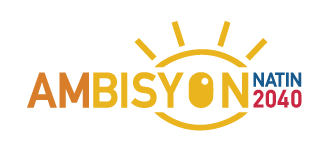Marites Landicho (The Manila Times)
At a recent Women for Women International luncheon in New York, the featured speaker—former US Secretary of State Hillary Clinton—shared her thoughts on women’s rights and equal pay. She said that in her long history as an employer, she had often observed the distinct reactions exhibited by men and women when it came to promotion on the job: When they got promoted, their reaction was almost always, “What took you so long?” But with women, career advancement was often met with, “Do you think I’m ready? Do you think I can do it?”
Unfortunately, self-doubt is one familiar territory for many of us, women. No matter how far we’ve come, barriers and glass ceilings still exist—some of which are even self-imposed—and much work needs to be done to completely dismantle these intangible limits.
In an effort to do exactly that, Deloitte worked with The Manufacturing Institute—a Washington DC-based organization focused on developing world-class manufacturing talent, and APICS, a professional association for supply chain management operating out of Chicago, to look at how women can thrive and feel empowered in one male-dominated sector: manufacturing.
Here’s a caveat: The effort of these three organizations is focused on the US’ manufacturing sector, which suffers from a big gender gap. Even though women in the US account for about 47 percent of the labor force, they only make up 29 percent of the manufacturing workforce. So Deloitte thought it relevant to survey more than 600 women and interview nearly 20 executives from the US manufacturing industry to see how businesses are attracting, recruiting and retaining women.
You’ll be happy to note that the Philippine manufacturing sector isn’t as heavily skewed toward men. Employment data from the Philippine Statistics Authority shows that as of July 2016, 43 percent of our manufacturing sector’s workforce is made up of women.
This isn’t to say, though, that local companies can’t pick up a thing or two from the Deloitte study. Beyond the survey results, the report has sound advice for organizations on how to help dismantle some of the barriers preventing women from reaching their full potential as professionals.
Start at the top and lead by example
Business leaders need to make diversity and inclusion a business priority by visibly leading by example. One way senior executives can do this is to increase the visibility of women leaders. When women see female role models in all levels within their organization, then it will be easier for them to aspire to the same posts.
Senior executives can also consider setting clear parity goals and along with that, using analytics to assess and develop their organization’s talent pipeline.
Note that in the Philippines, women make up only 39 percent of the employed population. And according to another Deloitte report released in 2015, only 7.4 percent of board seats in Philippine companies were held by women. So while our manufacturing sector may be an equal opportunity employer, there are definitely gender gaps in other areas, and not enough Filipinas are making it to the top posts.
Promote professional development
In Deloitte’s survey of the manufacturing sector, women said opportunities for challenging and interesting assignments motivated them to stay in that industry. Expanding on that, leaders should invest in personal and professional career development in order to retain and develop women professionals.
Executives who were interviewed also suggested having more experienced women in the organization act as sponsor advocates for their less experienced peers, paying close attention to their sponsorees’ development and professional progression so that the protégés have the support and guidance they need to carve their own path to the top.
Pay attention to the ‘group in the middle’
For many women, there will come a point in their career when work/life balance will become more complex, usually when they start growing their families. More than just maternity leave, women will need support, perhaps alternative pathways to advancement, and more flexible work arrangements around this period.
Less than 15 percent of the women Deloitte surveyed believed the manufacturing industry was very accepting of their family/personal commitments and allowed them to meet these commitments without affecting their career. This was despite the fact that more than four out of 10 of the survey respondents were either responsible for the majority of household duties or shared these duties equally with their spouse or partner.
In the Philippines, the median age for women giving birth is 27. Think about the women in your organization who are about this age: What positions do they generally hold in your company? Is there a path for them to advance their careers? Are there options and support systems available to them as the demands of raising children begin to grow?
Partner with the community
Another way of attracting female talent is to partner with communities so that they are aware of the opportunities in your organization. Manufacturing executives who were interviewed by Deloitte said companies should attract women early, especially now that competition for talent is getting fiercer. Organizations can partner with academic institutions to get women interested in their field of work, or they can support community actions that help women advance professionally.
These are just some of the ways organizations or entire industries can help women, not necessarily to succeed all the way to the top, but at least have the same chances of advancing to make an impact in their chosen fields, and to lead. If we break down enough barriers and glass ceilings, perhaps we can also quiet that self-doubt that prevents women from owning their professional achievements.
